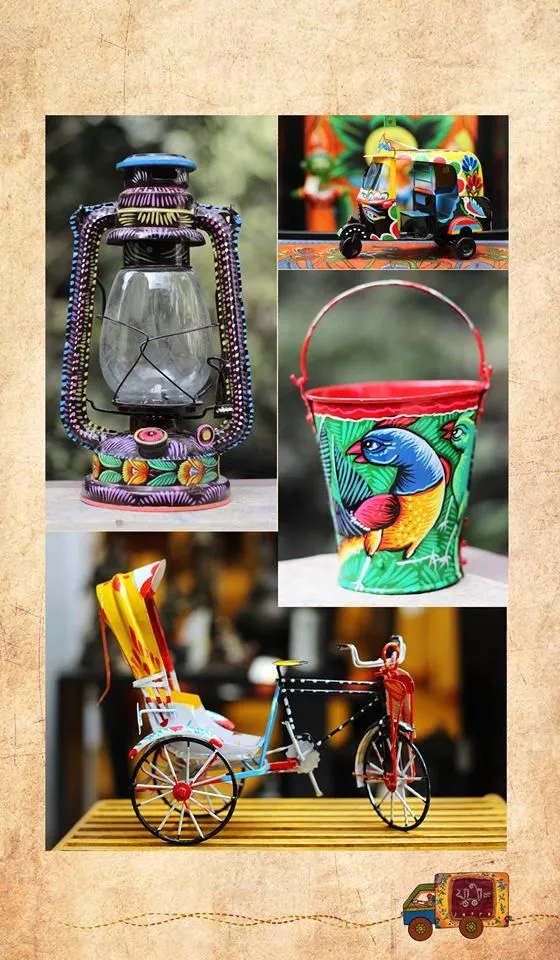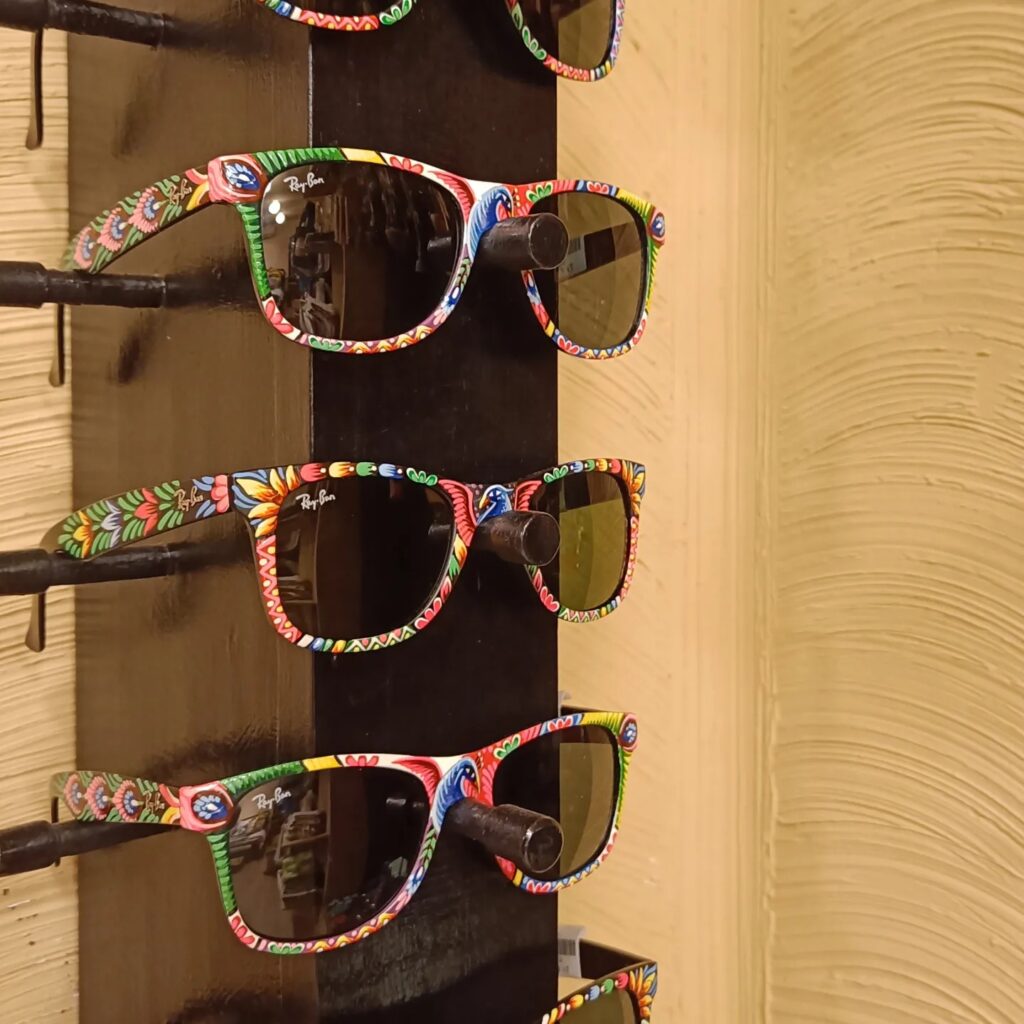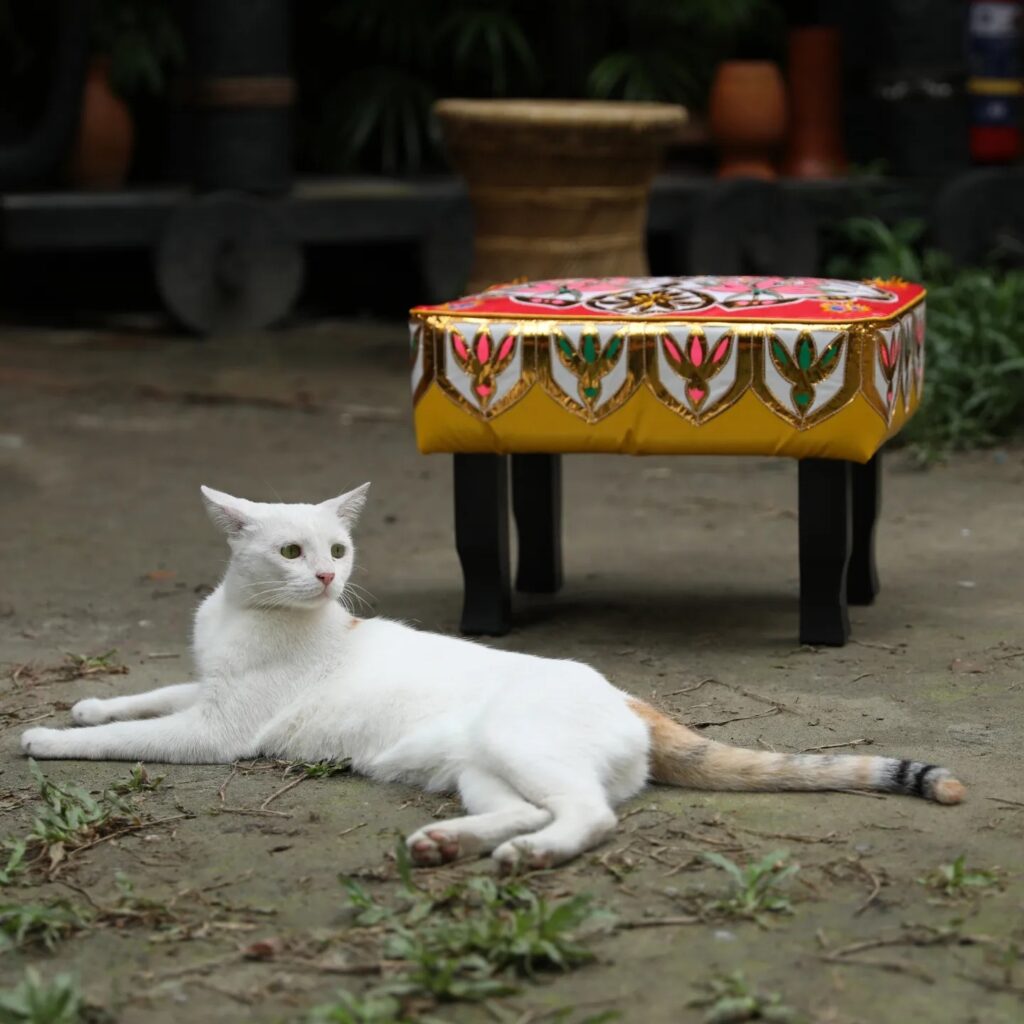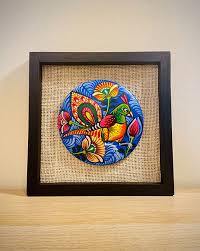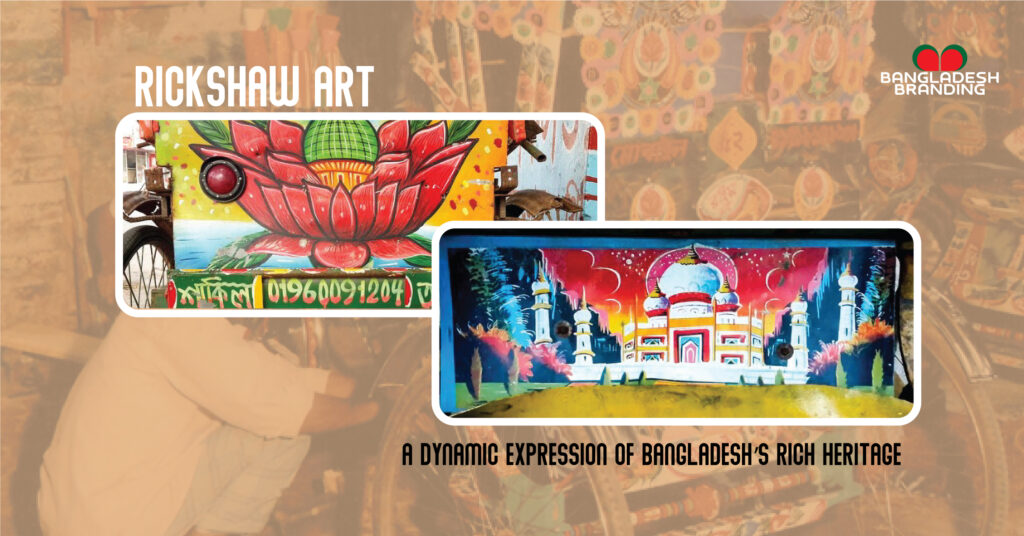Rickshaw painting is a distinctive and vibrant art form unique to Bangladesh. Originally designed to draw in customers with their vibrant colors, rickshaws have grown into a powerful symbol of our cultural identity. Recently, UNESCO honored them as intangible cultural heritage, underscoring their deep cultural significance and artistic value.
A Trip Back in Time
In the wake of the Liberation War, rickshaw artists depicted scenes of wartime atrocities and celebrated war heroes with great patriotism. By the mid-’70s, the art began featuring film stars and everyday people, and soon fabled animals appeared, marking a whimsical turn in the style.
In the early ’80s, rickshaws experienced a resurgence featuring film stars with their iconic sunglasses, distinctive hairstyles, and expressive features that captivated the public. While movie references were predominant, rickshaws in prominent cities also showcased a variety of themes, including cheerful animals, the Taj Mahal, floral designs, religious motifs, country scenes, and even airplanes.
The Rise of Rickshaw Art in Fashion
Although rickshaw art initially captivated city dwellers, it entered the realm of fashion in the 2000s. Today, clothing inspired by rickshaw painting is a high-fashion trend, seamlessly blending traditional and contemporary styles. Vibrant motifs, including birds, flowers, and natural elements, are now featured in saris, shalwar kameez sets, and kurtis, making them suitable for both everyday wear and special occasions.
Local fashion houses such as Aarong, Anjan’s, and Jatra are rejuvenating the fashion scene by incorporating the lively colors and patterns of rickshaw art.
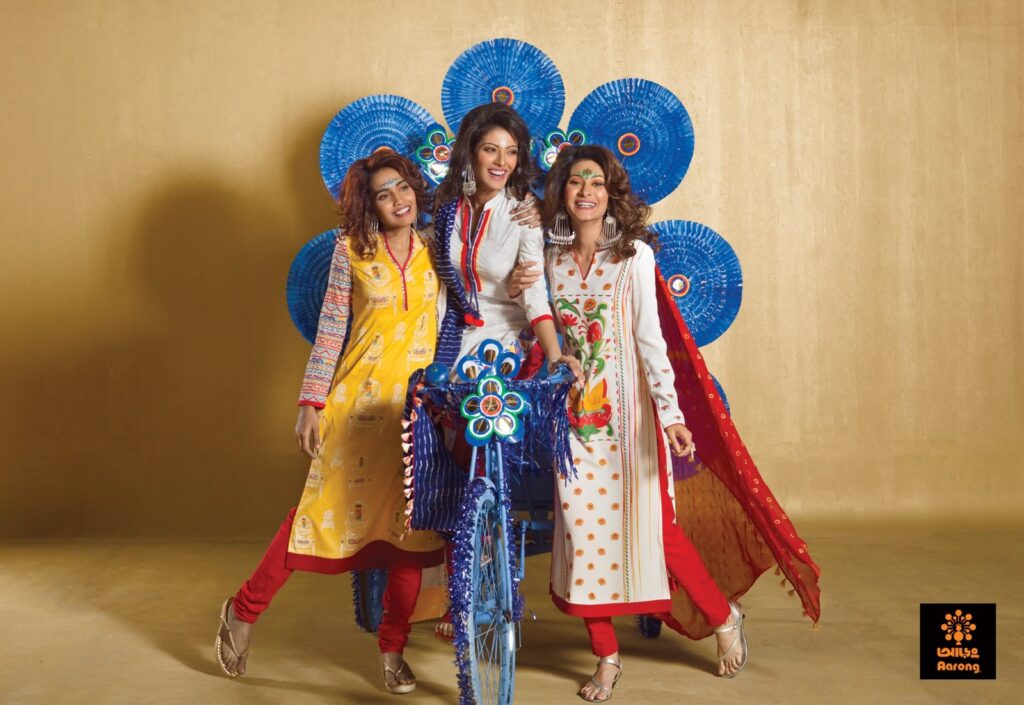
Bringing Rickshaw Art into Home Interiors
Rickshaw art has also made its way into home decor. Cushion covers with floral motifs or city scenes are a simple way to refresh your living space, creating a warm and inviting atmosphere. Patchwork quilts adorned with rickshaw paintings add a touch of sophistication, while wall hangings and murals bring the vibrant charm of this art form into your home.
Since the ’80s, rickshaw art has been celebrated as wall decor, and now, integrating it into your home’s design reflects its lasting appeal.
This art form not only reflects our rich cultural cand political history but also embodies our unique urban identity. A home adorned with rickshaw art preserves the beauty of Bangladesh, keeping it close to our hearts even when we are far from home.
